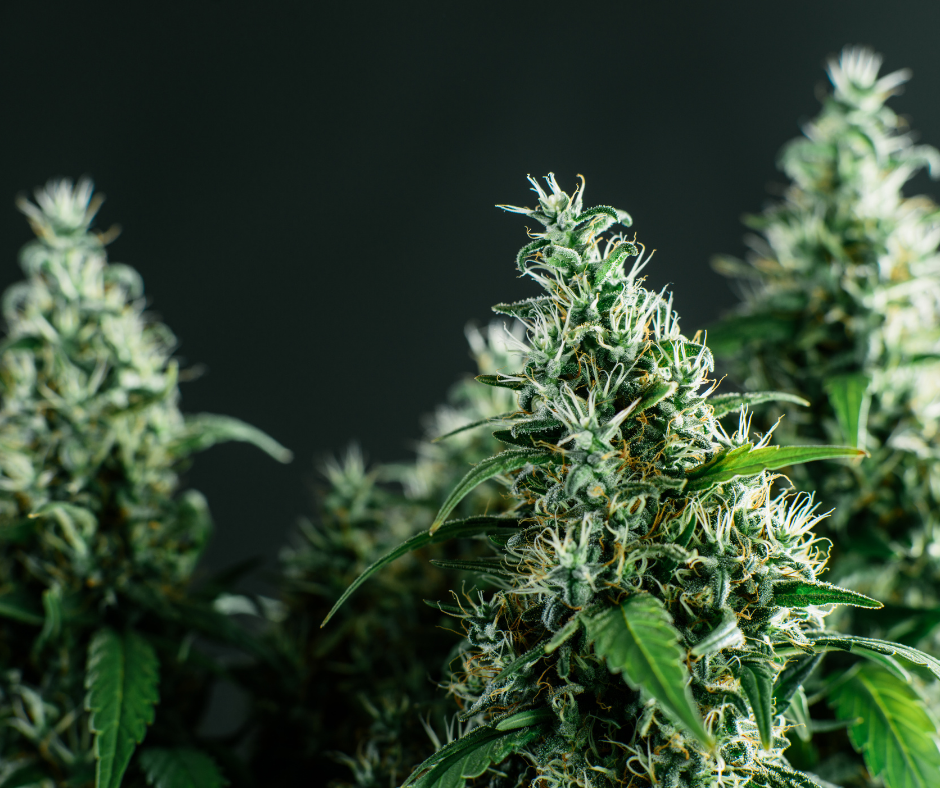Buy Weed Online, Cannabis
5 Reasons Why the Quality of Cannabis Matters
Ensuring the quality of cannabis is paramount, primarily for its THC and CBD content. Firstly, THC, the psychoactive component, impacts potency and the high experienced. Accurate THC levels ensure users understand dosage, avoiding adverse effects. Similarly, CBD, renowned for its therapeutic properties, requires consistency for reliable medicinal benefits. Quality control guarantees CBD levels match consumer expectations, aiding in managing various health conditions.
Secondly, the potency of THC and CBD directly correlates with efficacy. Whether seeking pain relief or relaxation, precise concentrations ensure desired outcomes. Inconsistent levels may lead to ineffective treatment or unexpected reactions. Quality assurance safeguards against such discrepancies, promoting safe and effective cannabis consumption. Additionally, reliable potency enhances the user experience, fostering trust in the product and its benefits.
Moreover, the entourage effect underscores the importance of balanced THC and CBD levels. Their synergy, along with other cannabinoids and terpenes, enhances therapeutic effects. Proper quality control preserves this symbiotic relationship, maximizing the plant’s therapeutic potential. Users benefit from a comprehensive spectrum of compounds, optimizing medicinal or recreational use. Quality cannabis cultivators prioritize maintaining this delicate balance, emphasizing the significance of THC and CBD consistency.
Furthermore, quality cannabis contributes to industry legitimacy and consumer confidence. Rigorous testing and adherence to standards reassure users of product safety and efficacy. Transparent labelling of THC and CBD levels cultivates trust and informed decision-making. With legalization expanding, ensuring quality sets reputable brands apart and shapes industry standards. Consumers gravitate towards reliable sources, prioritizing products with consistent THC and CBD content. Upholding quality standards benefits individual users and elevates the cannabis industry as a whole.
1. Personal Safety And Health
Personal safety and health are paramount in maintaining a balanced lifestyle. It involves being mindful of our surroundings and making informed choices, especially regarding substances like cannabis. While cannabis can offer therapeutic benefits for some individuals, it’s crucial to approach its use with caution, considering potential health implications. Responsible consumption, understanding dosage, and awareness of its effects can help mitigate risks and promote personal well-being.
When considering personal safety, it’s essential to recognize the potential impact of cannabis on cognitive function and motor skills. Driving or operating machinery under its influence can pose significant risks to oneself and others. Prioritizing safety means making informed decisions, which may include abstaining from cannabis use in situations where impairment could endanger oneself or those around them. Being proactive about personal health involves not only understanding the benefits but also the potential drawbacks of cannabis consumption.
In promoting personal safety and health, fostering open dialogue and education about cannabis is vital. Encouraging honest conversations about its effects, risks, and responsible use can empower individuals to make informed choices prioritizing their well-being. Whether for medical or recreational purposes, acknowledging the role of cannabis in one’s lifestyle and taking proactive measures to ensure its safe and mindful consumption contributes to overall personal safety and health.
2. The Weed’s Quality Affects Its Delivery Mode
The quality of the weed significantly influences its delivery method, impacting the user experience and desired effects. High-quality strains often demand more refined modes of consumption to preserve their delicate flavours and potent effects. Conversely, lower-grade varieties, like joints or basic vaporizers, may be suitable for less sophisticated delivery methods. Selecting premium-grade weed enhances the efficacy of delivery modes like dabbing or edibles, ensuring a more consistent and enjoyable high.
The relationship between weed quality and delivery mode underscores the importance of discerning consumer preferences and desired outcomes. Those seeking a nuanced and elevated experience may opt for top-of-the-line strains, necessitating specialized devices like dab rigs or premium vaporizers. Conversely, casual users may find satisfaction in simpler delivery methods, regardless of weed quality. Understanding this dynamic empowers consumers to tailor their consumption habits to match the characteristics of their chosen strain, maximizing enjoyment and efficacy.
Quality guides weed consumption, steering users towards optimal delivery methods for their desired experience. Premium-grade strains demand careful consideration and delivery precision, ensuring their unique attributes are fully appreciated. Conversely, lower-quality weed may suffice for less discerning consumers, allowing for a more relaxed approach to consumption. By recognizing the nuanced interplay between weed quality and delivery mode, users can unlock the full potential of their chosen strain, whether seeking intense euphoria or gentle relaxation.
Ultimately, the quality of the weed serves as a cornerstone in the selection of appropriate delivery methods, shaping the overall cannabis experience. From sophisticated vaporizers to traditional smoking apparatus, each mode of consumption interacts uniquely with the characteristics of the chosen strain. By prioritizing quality, users can elevate their enjoyment and maximize the benefits of cannabis, regardless of their preferred delivery method. Whether indulging in top-shelf delights or casual relaxation, the relationship between weed quality and delivery mode remains integral to a fulfilling cannabis journey.
3. Dose Control
Dose Control is paramount in substance consumption, ensuring safe and responsible usage. Understanding the appropriate dose is crucial, whether for medicinal or recreational purposes. With cannabis legalization on the rise, maintaining dose control becomes increasingly significant.
Users must grasp the potency of the product they’re consuming, considering factors like THC levels and individual tolerance. Overconsumption can lead to adverse effects, affecting both short-term experience and long-term health. Therefore, education about dose control is essential to navigate the nuances of cannabis consumption safely.
Technology is pivotal in facilitating dose control, with innovations like precision vaporizers and dosing pens allowing users to measure their intake accurately. These tools empower individuals to tailor their cannabis experience according to their needs and preferences while minimizing the risk of overconsumption.
Ultimately, embracing dose control fosters a culture of responsible cannabis use, promoting well-being and harm reduction within communities. By prioritizing education, leveraging technology, and advocating for informed decision-making, individuals can enjoy the benefits of cannabis while mitigating potential risks.
4. Getting The Desired Effect
In pursuit of relaxation or therapeutic relief, many individuals seek methods to achieve their desired effect. Whether it’s unwinding after a long day or managing chronic discomfort, people explore various avenues. Some turn to natural remedies, while others rely on modern medications. Amid these options, one substance often enters the conversation. With its growing recognition for its potential benefits, cannabis has become a point of interest for many. Yet, achieving the desired effect without explicitly mentioning cannabis remains a priority for some.
Exploring alternative wellness practices has become increasingly common in recent years. Many seek holistic approaches to address their health concerns. Individuals delve into mindfulness techniques, dietary adjustments, and physical activities in this quest. However, the allure of a certain herb often lingers in the background. Its potential to provide relief and relaxation is well-documented. Nonetheless, discussing methods to attain the desired effect while respecting discretion regarding the herb’s involvement is crucial.
Understanding the nuances of various remedies is essential for those navigating the intricacies of managing their well-being. Individuals strive to optimize their health outcomes through herbal supplements, meditation, or lifestyle adjustments. Yet, the shadow of a particular botanical remedy often hovers over these discussions. Its association with relaxation and comfort is undeniable. However, finding ways to articulate strategies for achieving the desired effect without directly referencing this botanical solution can be challenging.
Individuals explore diverse paths to reach their goals in pursuit of well-being. From traditional practices to modern interventions, the spectrum of options is vast. However, one element often remains unspoken yet present in the conversation. Its potential to deliver the desired effect is acknowledged, albeit subtly. Nevertheless, as discussions around holistic wellness continue to evolve, the quest for achieving optimal outcomes without overtly mentioning this botanical ally persists.
5. To Get Your Money’s Worth
Consumers often seek products that offer more than just the basics in their quest to maximize value. Whether a service or a tangible item, the desire to “get your money’s worth” drives decision-making. Consumers want assurance that their investment will yield satisfaction and utility. This principle applies universally, from household appliances to leisure activities.
In wellness, individuals seek holistic experiences that align with their values and preferences. From natural remedies to mindfulness practices, people want to invest in activities that promote their well-being. Amidst this pursuit, the emergence of alternative therapies has garnered attention. Integrating these practices into daily routines reflects a commitment to self-care and balance.
Among these alternatives, one stands out for its versatile applications and growing acceptance: cannabis. Recognized for its therapeutic properties, cannabis offers a spectrum of benefits for both physical and mental health. From pain management to stress relief, its potential is vast and continues to be explored through scientific research. As perceptions evolve, more individuals are incorporating cannabis-derived products into their wellness routines.
Essentially, “getting your money’s worth” transcends monetary value alone. It encompasses the satisfaction derived from investments that align with personal values and contribute to overall well-being. Whether it’s through embracing alternative therapies like cannabis or other lifestyle choices, the pursuit of value is a testament to the importance of mindful consumption and self-care.
Understanding the Importance of High-Quality Cannabis in Modern Society
In modern society, the significance of high-quality cannabis extends far beyond recreational use. Understanding its importance entails acknowledging its therapeutic potential, which has garnered attention in the medical field for treating various conditions like chronic pain, epilepsy, and anxiety. Moreover, as attitudes towards cannabis shift globally, there’s a growing recognition of its economic value. Cultivating top-tier cannabis requires stringent quality control measures, ensuring potency, purity, and consistency, factors crucial for both medical efficacy and consumer satisfaction.
Beyond its medicinal and economic facets, the quality of cannabis plays a pivotal role in shaping social perceptions and policies. As legalization efforts gain momentum, advocating for high standards in cultivation and distribution becomes imperative for fostering responsible consumption and mitigating potential harm. Moreover, embracing high-quality cannabis reflects a broader cultural shift towards prioritizing wellness and sustainability in consumption habits. Thus, comprehending the significance of superior cannabis goes hand in hand with navigating its evolving role in shaping modern society.
The Evolution of Cannabis Quality Standards
The evolution of cannabis quality standards has been a dynamic journey marked by regulatory shifts, scientific advancements, and industry maturation. Initially relegated to underground markets, cannabis faced minimal quality oversight, leading to variability in potency, purity, and safety. However, with the emergence of legal cannabis frameworks in various jurisdictions, standardized quality control measures became imperative.
Today, cannabis quality standards encompass a multifaceted approach, incorporating rigorous testing protocols, comprehensive labelling requirements, and Good Manufacturing Practices (GMP) adherence. This evolution reflects a collective effort to ensure consumer safety, promote product consistency, and foster trust within the burgeoning cannabis industry. As research continues and regulations evolve, the trajectory of cannabis quality standards promises to refine further, driving innovation and setting new benchmarks for excellence in the field.
Cultivation Practices and Quality Control
Cultivation practices and quality control of cannabis are paramount in ensuring consistent and safe products in the burgeoning cannabis industry. From selecting the appropriate strains to implementing proper growing techniques, every cultivation step significantly impacts the final product’s quality. Cultivators must meticulously monitor environmental conditions, such as temperature, humidity, and light exposure, to optimize plant growth and cannabinoid production. Moreover, adhering to stringent quality control measures throughout the cultivation process is essential to guarantee the purity, potency, and safety of cannabis products for consumers.
Effective quality control encompasses various stages, including testing soil composition, monitoring plant health, and implementing pest management strategies. Additionally, rigorous testing for contaminants, such as pesticides, heavy metals, and microbial pathogens, is imperative to ensure compliance with regulatory standards and safeguard public health. By prioritizing cultivation practices that emphasize quality control, cultivators can establish trust with consumers, uphold industry integrity, and contribute to the sustainable growth of the cannabis market.
The Role of Genetics and Strain Diversity
The role of genetics and strain diversity in cannabis cultivation and consumption is pivotal in understanding its vast array of effects and applications. Genetics shape the plant’s chemical composition, influencing its potency, flavour profile, and potential medicinal properties. With thousands of unique strains, each boasting a distinct genetic makeup, cannabis offers a spectrum of experiences tailored to individual preferences and needs. Whether it’s the calming effects of an Indica-dominant strain or the invigorating buzz of a sativa, the genetic diversity of cannabis allows consumers to explore a wide range of effects, catering to diverse lifestyles and medical conditions.
Furthermore, the genetic variability of cannabis presents opportunities for scientific research and innovation in medicine, agriculture, and beyond. Researchers can unlock the plant’s full therapeutic potential by studying different strains and their genetic traits and identifying specific cannabinoids and terpenes contributing to various health benefits. Additionally, genetic research enables breeders to develop new cultivars with targeted characteristics, such as higher cannabinoid content or improved resistance to pests and diseases. Understanding the intricate interplay between genetics and strain diversity is essential for maximizing the benefits of cannabis while ensuring its responsible and sustainable use.
Terpenes: The Aromatic Signature of Cannabis
Terpenes are the aromatic compounds found in cannabis that give each strain its unique scent and flavour profile. These organic compounds are responsible for the distinctive fragrance of the plant and play a crucial role in its therapeutic effects. From the zesty citrus notes of limonene to the earthy tones of myrcene, terpenes contribute to the diverse sensory experience of consuming cannabis. Beyond aroma, they interact synergistically with cannabinoids like THC and CBD, enhancing or modulating their effects through the entourage effect. This intricate interplay underscores the significance of terpenes in shaping the overall cannabis experience, whether for recreational enjoyment or medicinal purposes.
Understanding the complex world of terpenes opens avenues for tailored cannabis experiences. With advancements in extraction and analysis techniques, researchers and enthusiasts alike delve deeper into unravelling each terpene’s specific characteristics and potential benefits. As consumers seek personalized cannabis products, terpene profiles become integral in strain selection, guiding users toward desired effects and sensory preferences. Moreover, the recognition of terpenes’ therapeutic potential extends beyond cannabis, fostering interest in aromatherapy and herbal medicine. Terpenes, with their aromatic allure and multifaceted roles, continue to intrigue and enrich our exploration of cannabis and its therapeutic potential.
Navigating Quality Assurance in Cannabis Products
As cannabis permeates mainstream markets, ensuring product quality and safety becomes paramount. From dispensaries to online retailers, consumers are faced with a myriad of choices, each claiming to offer the finest cannabis products. However, without robust quality assurance mechanisms in place, discerning between premium and subpar offerings can be challenging. Third-party testing laboratories play a crucial role in conducting comprehensive analyses to verify potency, purity, and the absence of contaminants.
Transparency and Consumer Education
Empowering consumers with knowledge is essential in fostering a culture of responsible cannabis consumption. Transparent labelling practices, including detailed information on cannabinoid content, terpene profiles, and cultivation methods, enable consumers to make informed purchasing decisions. Moreover, educational initiatives aimed at elucidating the nuances of cannabis quality can help demystify the plant and dispel misconceptions. By promoting transparency and consumer education, the cannabis industry can foster trust.
To Conclude
In summary, the debate around cannabis regulation hinges on numerous factors. From its potential medical benefits to concerns about misuse, stakeholders must carefully navigate these complexities. Ultimately, balanced policies prioritizing public health and individual liberties are vital for addressing this contentious plant’s multifaceted issues.
To wrap up, it’s evident that the discourse on cannabis extends far beyond recreational use. As society evolves, so must our approach to its legalization and regulation. By incorporating evidence-based strategies and fostering open dialogue, we can foster a more informed and equitable framework for managing the myriad implications of this plant.
All views expressed here are from a third-party source and do not necessarily represent the entity of Buzzed Extracts itself. This blog post is intended to be used for informational purposes only.



